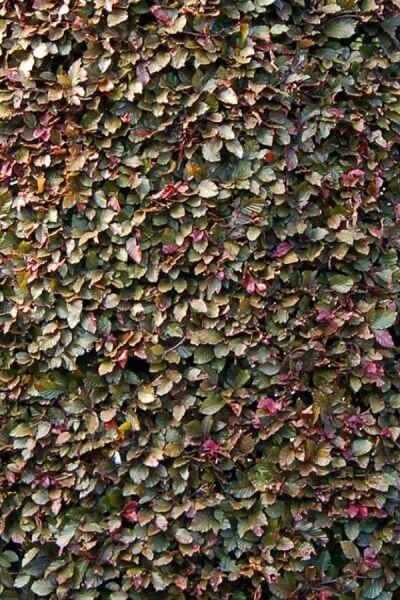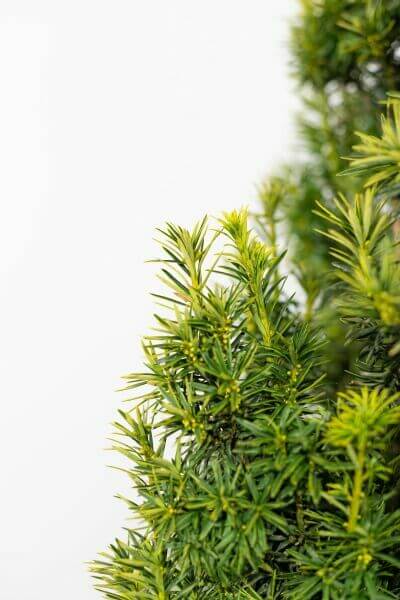Top Hedge Plants For Your Garden
Top Hedge Plants For Your Garden
Blog Article
Hedge Plants For Wildlife Habitats
Improve your garden's allure with lavish hedge ranges such as Yew (Taxus), Thuja, Laurel, Photinia, and Bamboo, commemorated for their structural stability and environmental advantages.
Yew and Thuja provide evergreen protection and winter resilience, while Laurel uses rapid growth and broad, aromatic leaves.
Photinia adds seasonal appeal with its lively red foliage, and Bamboo provides a low-maintenance, serene ambiance.
These hedges enhance air quality, reduce sound, and create tranquil, private areas.
Proper planting, spacing, and maintenance make sure vigorous growth and eco-friendly harmony.
Check out how these lush varieties can raise your garden's appeal and well-being.
Secret Takeaways
Change Your Garden With Lush Hedge Varieties
- Select Yew for its dense, evergreen development and unequaled durability.
- Go with Laurel for its fast growth and broad leaves, guaranteeing fast personal privacy.
- Pick Photinia for its vibrant seasonal foliage, which turns a striking dark red.
- Utilize Bamboo for a low-maintenance, winter-hardy hedge with aesthetic appeal.
- Space plants 2-3 per meter and prune routinely for ideal growth and health.
Popular Hedge Plants
When transforming a garden with rich hedge ranges, it's vital to consider popular hedge plants such as Yew, Thuja, Laurel, and Photinia due to their unique characteristics and benefits.
Yew (Taxus) is highly esteemed for its durability and thick, green development, making it a prime option for sustaining landscapes.
Thuja is kept in mind for its evergreen foliage and robust winter season durability.
Photinia includes seasonal vibrancy with red leaves that darken with time, producing dynamic visual appeal.
Laurel uses quick growth and fragrant, broad leaves, suitable for quick personal privacy.
Furthermore, Bamboo is an outstanding option for atmosphere, providing a low-maintenance, winter-hardy choice that improves the garden's visual with its elegant, swaying canes.
These choices deal with a range of horticultural needs and choices.
Advantages of Garden Hedges
Garden hedges provide a wide range of benefits, making them a valuable addition to any landscape. These natural barriers are cost-efficient to execute and provide significant wind defense, boosting air flow and adding to noise reduction. The dense foliage of hedges like Thuja and Beech guarantees personal privacy by obstructing exposure, creating a serene and secluded environment.
Hedges also play a crucial role in microclimate policy, supplying a stable environment that fosters plant growth and lessens temperature fluctuations. Their complex leaf structures filter contaminants, enhancing air quality and contributing to a much healthier garden environment.
Furthermore, hedges excel in noise reduction, soaking up and deflecting acoustic waves to lower ambient sound levels. This double performance of offering both acoustic and visual personal privacy improves the overall serenity and visual appeal of any garden.
Planting and Maintenance Tips
For an effective hedge, meticulous preparation of the planting area is crucial. Ensure the soil has correct pH and drainage to support strong root advancement.
Area the plants properly for the picked types. Water the hedge often throughout its preliminary growth phase, changing as needed with seasonal modifications.
Carry out a organized insect control and disease prevention method, using chemical or natural treatments when needed. Regularly check for aphids, termites, and fungal infections.
Apply mulch to keep wetness and reduce weeds. Seasonal pruning promotes thick growth and air circulation, important for plant health.
Following these guidelines will assist you cultivate a lively, well-maintained hedge that boosts the beauty of your garden.
Spacing and Cutting Standards
Spacing and Trimming Guidelines
Correct spacing and trimming are crucial for cultivating healthy, aesthetically appealing hedges. Adequate spacing guarantees each plant gets adequate nutrients, light, and air flow.
Follow these guidelines for ideal hedge maintenance:
- Spacing: Position hedge plants 2-3 plants per meter to encourage robust growth.
- Pruning Strategies: Regular pruning is important for preserving wanted hedge height and shape. Cut brand-new growth in summer and cut down older wood throughout winter.
- Seasonal Care: Change trimming schedules and techniques according to seasonal requirements to guarantee plant health.
- Hedge Height: Frequently monitor and cut to maintain the preferred hedge height and achieve consistent aesthetics.
Adhering to these steps will guarantee your hedge prospers, enhancing both the appeal and functionality of your garden.
Choosing the Right Hedge
Selecting the Right Hedge
Choosing the appropriate hedge includes evaluating aspects such as mature height, foliage density, and environmental durability. Effective hedge plant choice requires comprehending each species' growth qualities and site-specific flexibility.
For example, Yew (Taxus) offers excellent longevity and thick growth, while Thuja is significant for its winter season durability. Furthermore, considering upkeep requirements is vital; fast-growing types like Laurel or Privet demand routine cutting, whereas low-maintenance alternatives like Bamboo or Ivy might be more suitable for those seeking minimal maintenance.
Environmental aspects such as soil type, light accessibility, and moisture conditions must also direct the choice process. This mindful method ensures the selected hedges will thrive, supplying both functional and aesthetic advantages to the garden landscape.
Delivery and Planting Recommendations
To guarantee your hedge plants grow, they should be provided by specialized couriers and planted without delay upon arrival.
Follow these necessary steps for effective planting:
- Soil Preparation: Enrich the soil with raw material to improve drainage and nutrient material.
- Planting Depth: Develop a trench twice the width and equal to the depth of the root ball.
- Watering Methods: Water completely after planting, keeping the soil regularly moist but not saturated.
- Mulching: Use a layer of mulch to retain wetness and reduce weeds.
Client Assistance and Service
Offered the crucial role of timely assistance in horticultural pursuits, our client assistance group is available six days a week through telephone, email, and social media to provide professional suggestions and swiftly address any concerns. Their dedication to quick response times ensures customer complete satisfaction by fixing queries associated with plant health, ideal planting techniques, and maintenance schedules.

Within 48 hours
This extensive support group, enhanced by a stellar 9.3/ 10 customer score, highlights our dedication to improving the gardening experience for every single customer.
Regularly Asked Concerns
The Length Of Time Does It Consider Hedge Plants to Develop?
Hedge plants generally require one to three years to end up being totally developed, with the specific period differing by types and growing conditions.
Efficient care throughout this vital period is important for robust development. Constant watering, alert weed control, and appropriate fertilizer application are pivotal in promoting strong root advancement.
For instance, fast-growing species like Laurel may establish quicker, while slower-growing varieties such as Yew might take longer. Diligent upkeep speeds up the facility process, resulting in healthy and thick hedges.
What Are the very best Hedge Plants for Privacy?
The question of the finest hedge plants for personal privacy involves evaluating evergreen and deciduous alternatives.
Evergreen hedges like Thuja, Laurel, and Cypress supply year-round coverage, ensuring constant privacy.
In contrast, deciduous hedges such as Beech use seasonal personal privacy, shedding leaves in colder months.
Key upkeep suggestions for privacy hedges consist of regular trimming, fertilizing in spring, and correct spacing-- generally 2 to 3 plants per meter.
Additionally, constant watering and diligent weed elimination are essential for promoting healthy, thick development.
Can Hedge Plants Attract Wildlife to My Garden?
Yes, hedge plants can bring in wildlife to your garden by providing necessary benefits like shelter, food, and nesting sites, consequently enhancing regional biodiversity. For instance, yew, holly, and laurel are exceptional for attracting birds, while ivy supports a range of insects.
However, it's crucial to note that there are some downsides, such as increased maintenance to handle pests and regular maintenance. Carefully choosing and keeping hedge varieties can assist stabilize these drawbacks and benefits, eventually cultivating a dynamic and sustainable ecosystem in your garden.
Exist Any Flowering Hedge Plants Available?
Yes, there are flowering hedge plants readily available that can boost the beauty of your garden.
For instance, Elaeagnus, likewise known as Olive Willow, produces aromatic white flowers in the fall, including a touch of elegance.
Photinia, another popular choice, showcases dynamic red leaves that grow into an abundant green, producing a vibrant visual result throughout the seasons.
To ensure these plants flourish, it's vital to practice correct pruning techniques and seasonal maintenance, such as trimming new development in the summer season and cutting down in the winter season.
These measures will help maintain the health and aesthetic appeal of your flowering hedges.
How Do I Prevent Insects in My Hedge Plants?
To prevent insects in hedge plants, utilize natural insect control techniques and preserve appropriate hedge care. Present helpful pests like ladybugs, which victimize harmful insects, to produce a well balanced community.
Frequently examine your hedges for indications of infestation and quickly eliminate any affected parts to prevent the spread. Ensure the health of your hedges by applying well balanced fertilizers and supplying appropriate water.
Use mulching to keep soil moisture and proper spacing to reduce plant stress and promote robust development. These practices jointly help in reducing pest issues and preserving a healthy hedge.
Conclusion
In essence, selecting the best hedge varieties such as Yew, Thuja, and Laurel can change any garden into a peaceful haven. These plants supply year-round plant, improve visual appeal, and deal practical advantages like noise reduction and wind defense.
Appropriate planting techniques, precise spacing, consistent watering, and seasonal trimming are essential for ideal growth.
Trustworthy delivery services and skilled client support make sure a seamless experience from purchase to planting, making it easier than ever to elevate your outside space.
Garden hedges more info use a wide variety of benefits, making them an important addition to any landscape. These natural barriers are affordable to carry out and provide substantial wind protection, boosting air circulation and contributing to sound reduction. The thick foliage of hedges like Thuja and Beech ensures privacy by blocking visibility, developing a serene and remote environment.

Pruning Techniques: Routine pruning is vital for preserving desired hedge height and shape. Cut new growth in summer season and cut back older wood during winter.
Report this page